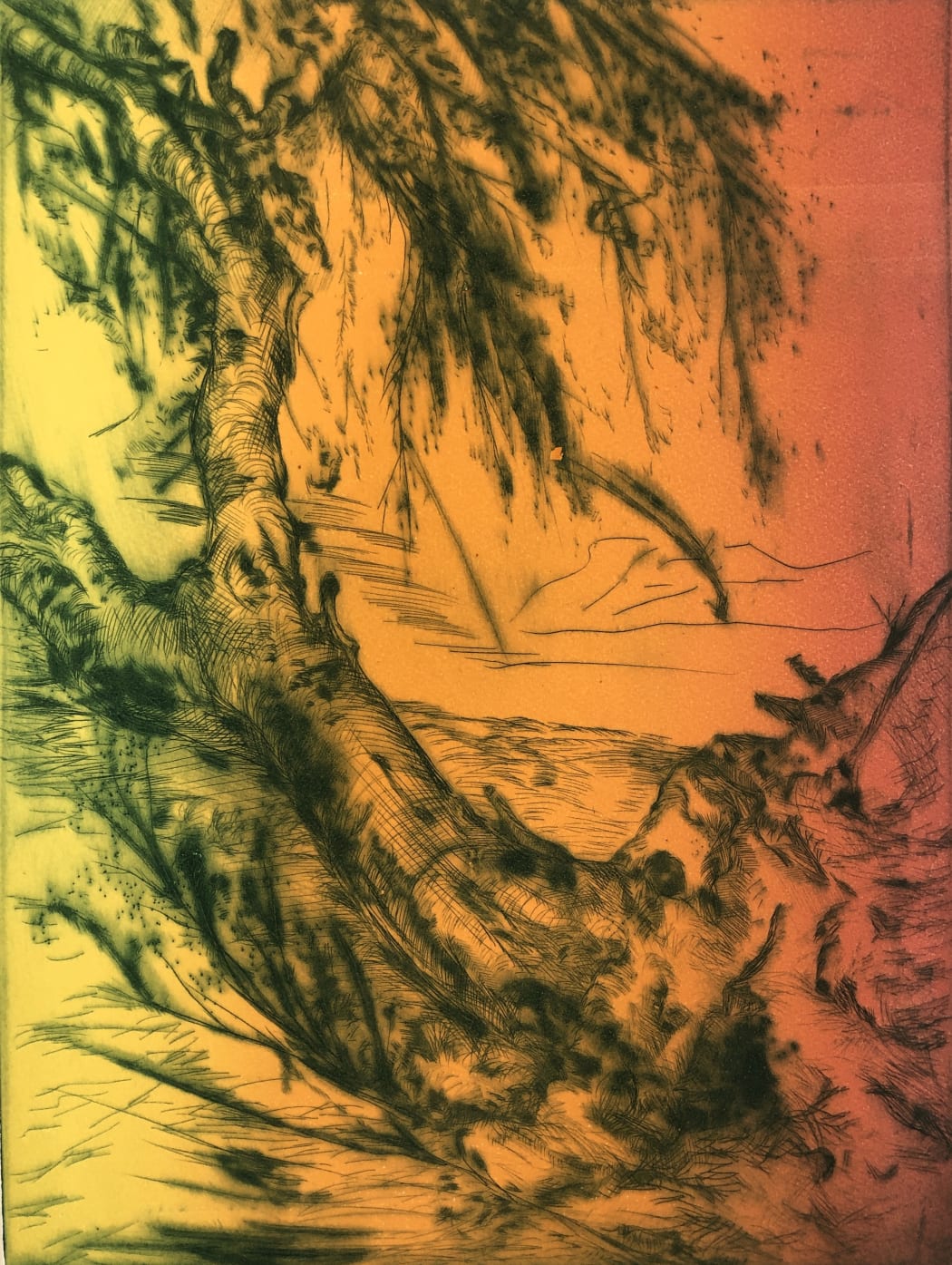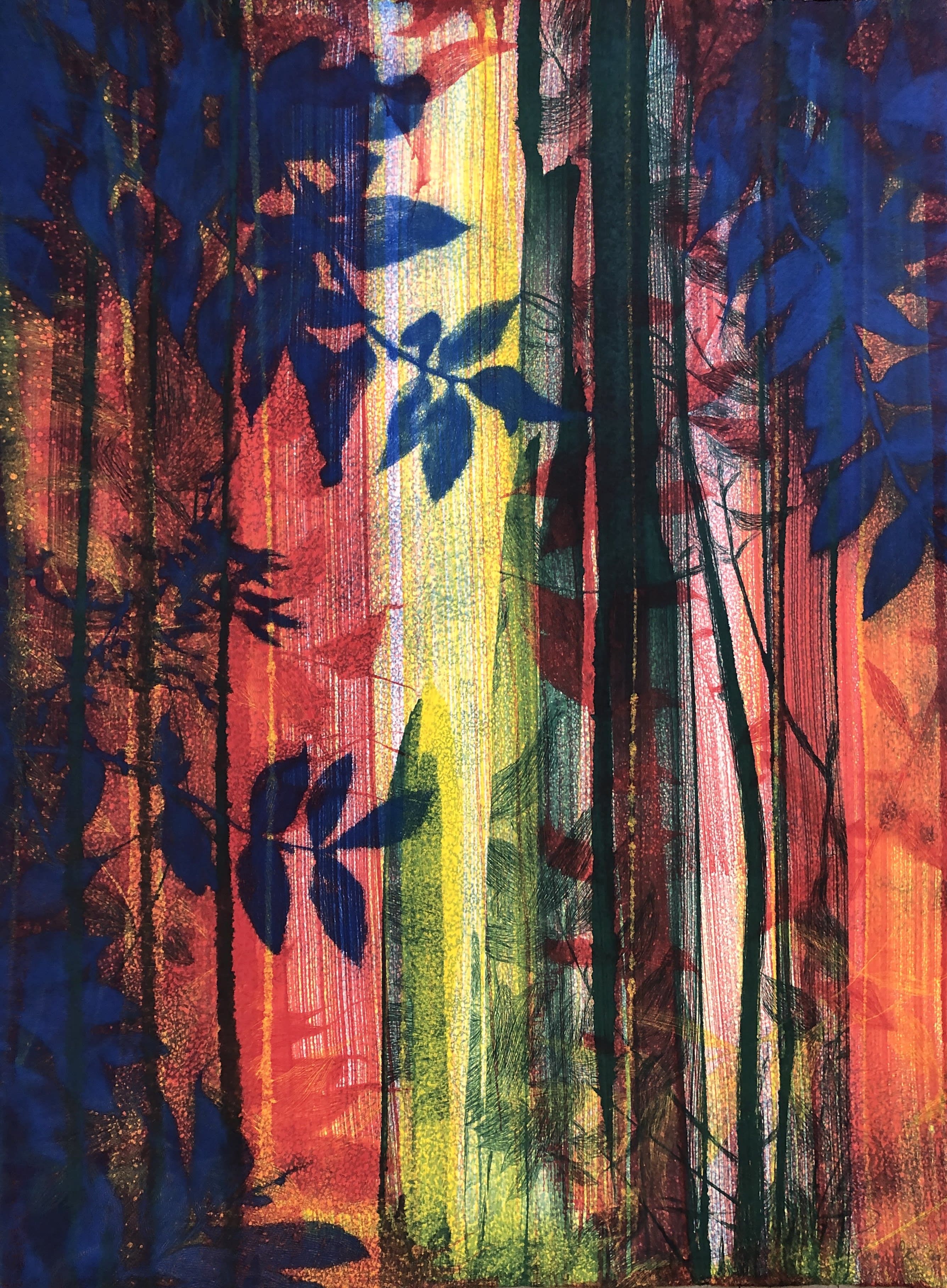
Edward Twohig’s latest exhibition in the Print Room is all about colour. Having spent the last 16 months grappling with the difficult task of multi-colour printing, Edward has presented us with a beautiful new body of work, the final result of a labour-intensive year or so of trial and error in the Studio.
Traditionally in colour intaglio printing, a separate plate is used for each individual colour. Eames artist Karen Keogh has mastered the art of multi plate printing, and through complex registration and breaking down the image into layers using different plates, they are able to mix colours visually. This can create a wonderful sense of luminosity in colour etching. However, in this new work, Edward Twohig has employed a method called ‘viscosity printing’, which enables artists to print more than one colour using one single plate. The technique was invented in Paris in the 1920s by Stanley William Hayter at the experimental etching workshop, Atelier 17. The viscosity method encompasses both intaglio and relief printing. By mixing inks at different viscosities, or consistencies, this affects the stiffness or flow of the ink, allowing artists to layer the different colours on the plate and run it through the press just once to print the image.
Each colour in Kaleidoscope has been mixed exactly to Edward’s specifications, using a mixture of etching ink, poppy seed oil and linseed oil to different consistencies. Some of the pieces in the Homage to William Morris series have up to 15 colours.

Homage to William Morris 35
‘Viscosity printing is life, it’s seasonal variation. Line work is like a diary. I never thought I would combine the two.’
Edward is not new to printing in this way. When he was a student at Chelsea College of Art in the 1980s, he worked as a printer for John Hoyland RA and helped realise many of the etchings we have available at Eames Fine Art, including many of those featured in the 2021 exhibition ‘Relentless Rhythm.’ In fact, this exhibition was the catalyst for Edward to begin working in this experimental way, and rediscover colour printing again. Printmaking, for Edward, has always meant honouring traditional methods, yet, the Hoyland prints which Edward described as ‘electric’ reminded him that this view can be revised, and combined with new ways of making.
John Hoyland, Rivers of Surpise, 1989
Kaleidoscope continues in the Print Room at 159 Bermondsey Street until 21st August. All the works in the show can be viewed on the exhibition page here.

